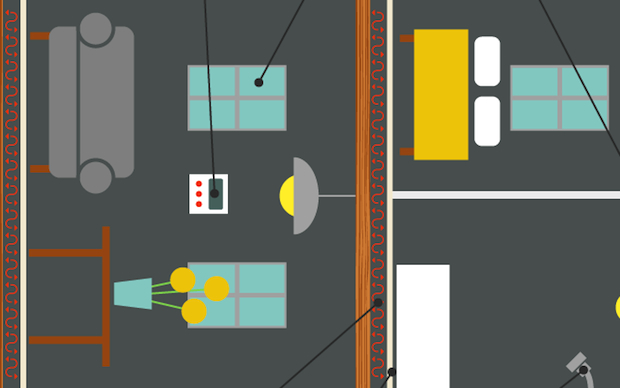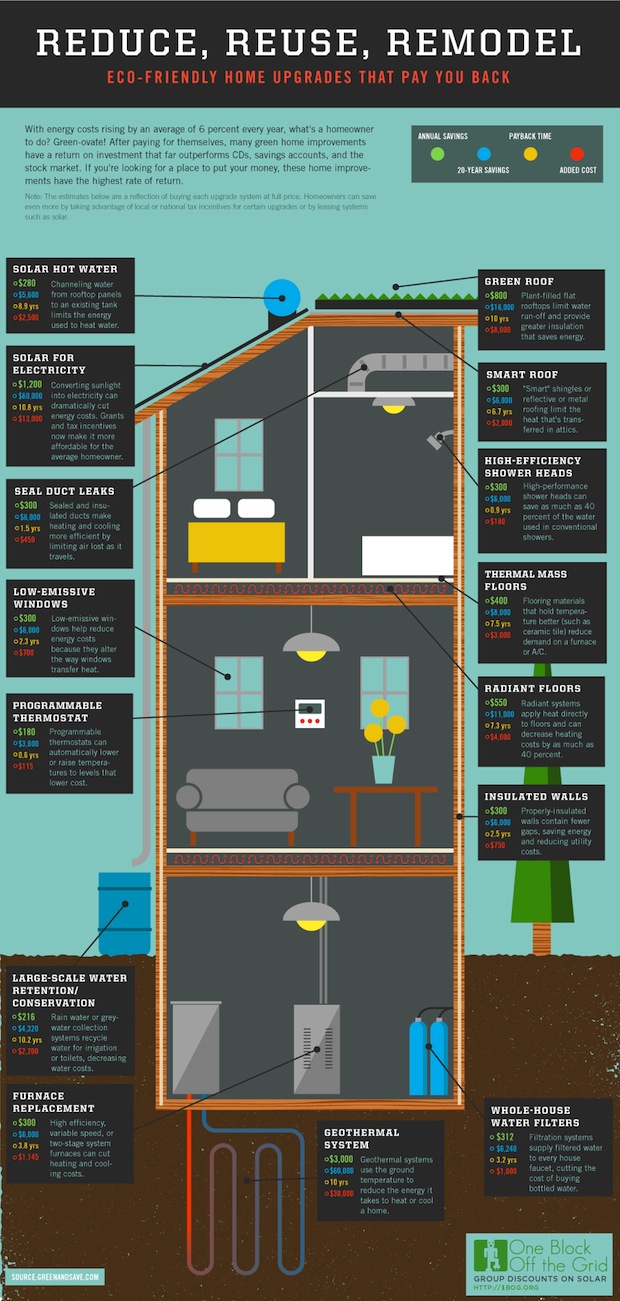Fast Company
Infographic: The Economics Of Making Your House More Energy Efficient
Energy-efficient home improvements cost a lot up front, but eventually pay themselves off. Exactly how long does it take? Consult this handy chart.

The idea of the home of the future--equipped with all sorts of fancy, clean energy features--is an appealing vision. Sadly, many of us have houses that are already stuck squarely in the present. To do something like add solar panels, or even just insulate better, requires what can be an extreme cash outlay. But there's an upside: If you're improving your house to be more energy efficient, you're going to start saving money. Are you going to save enough to make your expenditures worthwhile?
That's the question that the latest infographic from solar provider One Block Off The Grid attempts to answer. Should you throw down for that retrofit? The truth is, it depends on what you want to do, and--more importantly--how long you're going to stay in your house.
If you're just passing through, consider efficient shower heads (paid off in less than a year with it's $300 of savings) or a programmable thermostat (just a hair over six months). For the more sedentary among us, there are projects that will take longer, like solar panels (11 years to recoup investment) or radiant floors that distribute heat and reduce costs (7 years).
But what's good to remember is that once you make it past the break-even point, you're saving money every year, money that goes right into your wallet. In the case of solar power, you might even start making money, as you can feed energy back into the grid. Over 20 years, you're going to save $60,000 in electricity costs with solar panels; $11,000 with radiant floors. Think long-term, and these improvements start seeming better and better.
Because it's easier to read in pictures, here's the full infographic:













